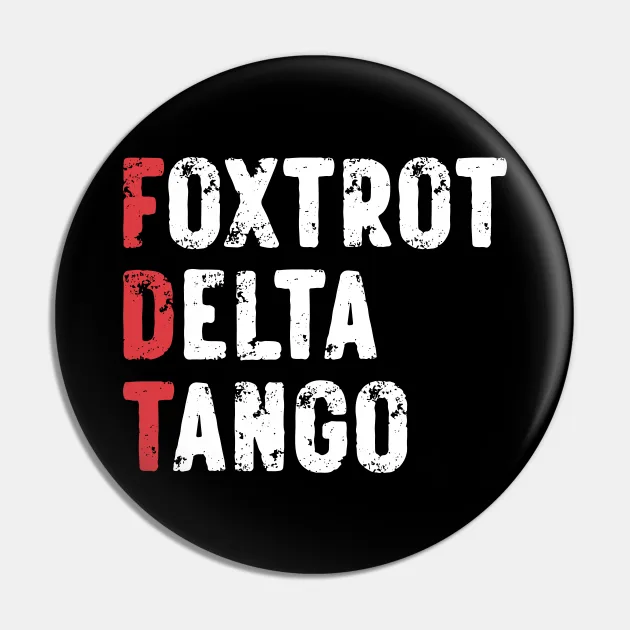When you hear the phrase “Foxtrot Delta Tango Meaning“, you might wonder what it means and where it comes from. These words are not random; they are part of the NATO phonetic alphabet, a standardized set of code words used to represent letters of the English alphabet. In this article, we will explore the meaning of “Foxtrot Delta Tango,” the history and purpose of the phonetic alphabet, and its practical applications in various fields such as aviation, military, emergency services, and even everyday communication.
What Does “Foxtrot Delta Tango” Mean?
“Foxtrot Delta Tango” represents the letters F, D, and T in the NATO phonetic alphabet. Each word corresponds to a specific letter:
- Foxtrot = F
- Delta = D
- Tango = T
So, when someone says “Foxtrot Delta Tango,” they are spelling out the letters F, D, and T. The phonetic alphabet is used to ensure clarity and avoid confusion, especially in situations where communication may be difficult due to noise, poor signal, or language barriers.
The NATO Phonetic Alphabet: A Brief Overview
The NATO phonetic alphabet (also known as the International Radiotelephony Spelling Alphabet) is a set of code words assigned to each letter of the English alphabet. It was developed to improve the clarity of spoken communication, particularly over radio or telephone, where mishearing a letter could have serious consequences.
Here is the full NATO phonetic alphabet for reference:
| Letter | Code Word |
|---|---|
| A | Alpha |
| B | Bravo |
| C | Charlie |
| D | Delta |
| E | Echo |
| F | Foxtrot |
| G | Golf |
| H | Hotel |
| I | India |
| J | Juliett |
| K | Kilo |
| L | Lima |
| M | Mike |
| N | November |
| O | Oscar |
| P | Papa |
| Q | Quebec |
| R | Romeo |
| S | Sierra |
| T | Tango |
| U | Uniform |
| V | Victor |
| W | Whiskey |
| X | X-ray |
| Y | Yankee |
| Z | Zulu |
Why Use the Phonetic Alphabet?
The main reason for using the phonetic alphabet is to avoid miscommunication. Many letters sound similar, especially over a poor connection or in a noisy environment. For example, “B” and “D” can sound alike, as can “M” and “N.” By using distinct code words like “Bravo” and “Delta,” the chance of misunderstanding is greatly reduced.
Key Benefits:
- Clarity: Each code word is chosen for its distinct sound and ease of understanding.
- International Standard: The NATO phonetic alphabet is recognized and used worldwide.
- Safety: In critical situations, such as aviation or military operations, clear communication can save lives.
The History of the Phonetic Alphabet
The idea of using code words to represent letters dates back to the early days of radio communication. Various versions were developed over the years, but the current NATO phonetic alphabet was officially adopted in 1956. It was designed to be easily understood by speakers of many different languages and to minimize confusion.
Practical Uses of “Foxtrot Delta Tango” and the Phonetic Alphabet
1. Aviation
Pilots and air traffic controllers use the phonetic alphabet to communicate flight information, call signs, and coordinates. For example, a flight with the call sign “FDT123” would be referred to as “Foxtrot Delta Tango Meaning One Two Three” over the radio.

2. Military
The military relies heavily on the phonetic alphabet for clear communication, especially during operations where mistakes can be costly. Orders, coordinates, and identification codes are often spelled out using code words.
3. Emergency Services
Police, firefighters, and paramedics use the phonetic alphabet to relay information quickly and accurately, such as license plate numbers or addresses.
4. Customer Service and Business
In customer service, especially over the phone, representatives may use the phonetic alphabet to confirm names, addresses, or reference numbers to avoid errors.
5. Everyday Use
Anyone can use the phonetic alphabet in daily life, such as spelling out names or codes over the phone, especially when clarity is important.
Examples of “Foxtrot Delta Tango” in Context
- Aviation: “This is flight Foxtrot Delta Tango 123 requesting permission to land.”
- Military: “Proceed to grid Foxtrot Delta Tango.”
- Police: “Suspect vehicle is a blue sedan, license plate Foxtrot Delta Tango 456.”
Common Questions About “Foxtrot Delta Tango”
What does “Foxtrot Delta Tango” stand for?
It stands for the letters F, D, and T in the NATO phonetic alphabet.
Why not just say the letters?
Because some letters sound similar, especially over radio or phone, using code words ensures that each letter is clearly understood.
Is the phonetic alphabet the same in every country?
The NATO phonetic alphabet is the international standard, but some countries or organizations may have their own variations. However, NATO’s version is the most widely used.
Can the phonetic alphabet be used for numbers?
Yes, numbers are usually spoken as individual digits (e.g., “One Two Three” for 123), but there are also standard pronunciations for clarity (e.g., “niner” for 9).
Tips for Using the Phonetic Alphabet
- Practice: Familiarize yourself with the code words for each letter.
- Speak Clearly: Enunciate each word to ensure understanding.
- Use in Noisy Environments: The phonetic alphabet is especially useful when background noise is an issue.
- Be Patient: Not everyone is familiar with the phonetic alphabet, so be prepared to explain if needed.
Conclusion
The phrase “Foxtrot Delta Tango” is more than just a string of words; it is a clear and effective way to communicate the letters F, D, and T using the NATO phonetic alphabet. This system is essential in fields where clear communication is critical, such as aviation, the military, and emergency services. By understanding and using the phonetic alphabet, you can ensure your message is received accurately, no matter the situation.
Whether you are a pilot, a soldier, a customer service representative, or just someone who wants to improve their communication skills, learning the phonetic alphabet is a valuable tool. Next time you need to spell something out, try using “Foxtrot Delta Tango” and see how much clearer your message becomes!



